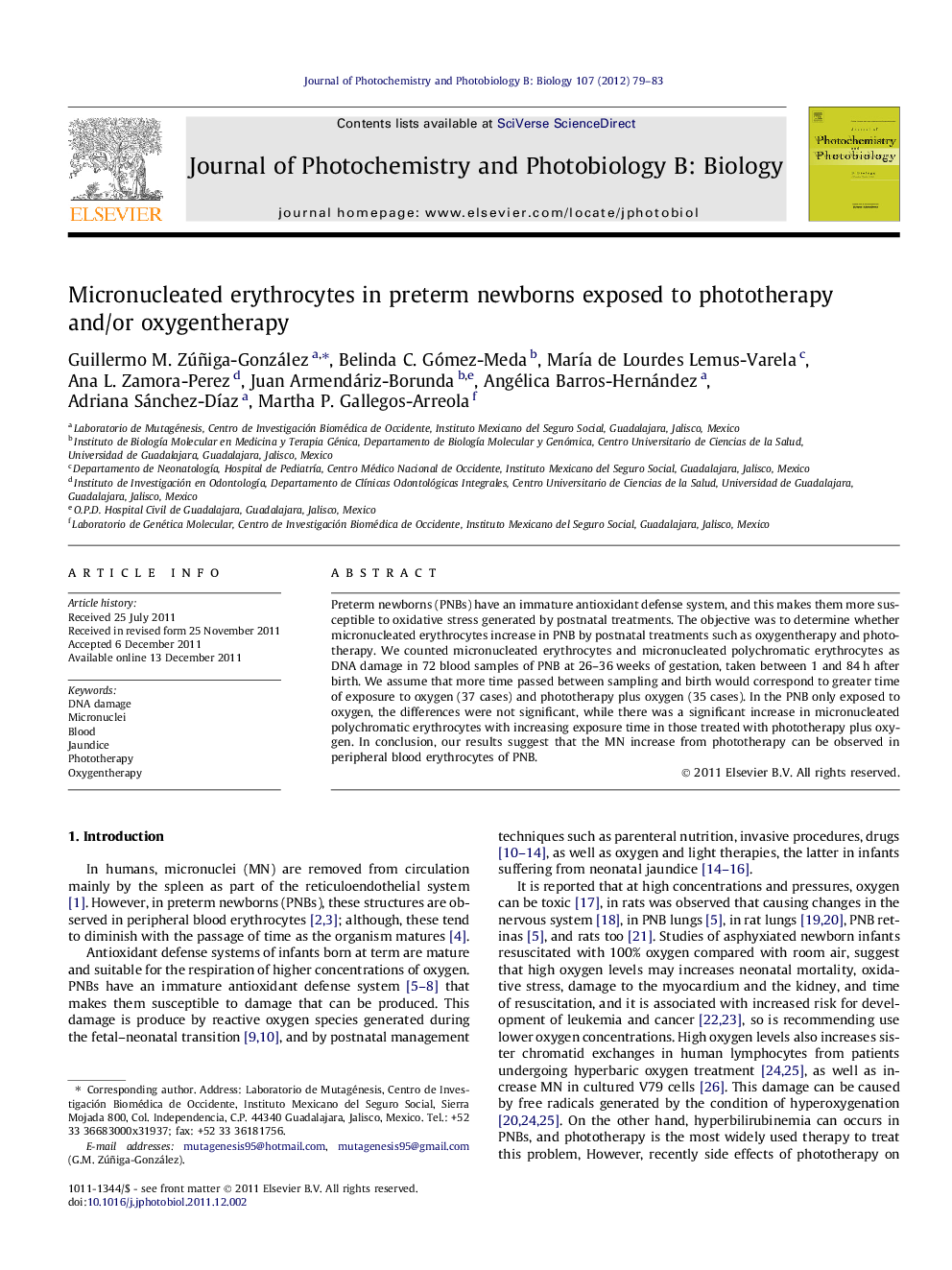| Article ID | Journal | Published Year | Pages | File Type |
|---|---|---|---|---|
| 29818 | Journal of Photochemistry and Photobiology B: Biology | 2012 | 5 Pages |
Preterm newborns (PNBs) have an immature antioxidant defense system, and this makes them more susceptible to oxidative stress generated by postnatal treatments. The objective was to determine whether micronucleated erythrocytes increase in PNB by postnatal treatments such as oxygentherapy and phototherapy. We counted micronucleated erythrocytes and micronucleated polychromatic erythrocytes as DNA damage in 72 blood samples of PNB at 26–36 weeks of gestation, taken between 1 and 84 h after birth. We assume that more time passed between sampling and birth would correspond to greater time of exposure to oxygen (37 cases) and phototherapy plus oxygen (35 cases). In the PNB only exposed to oxygen, the differences were not significant, while there was a significant increase in micronucleated polychromatic erythrocytes with increasing exposure time in those treated with phototherapy plus oxygen. In conclusion, our results suggest that the MN increase from phototherapy can be observed in peripheral blood erythrocytes of PNB.
► Information about perinatal genetic damage could be obtained with a drop of blood. ► Micronucleated erythrocytes are natural DNA damage biomarkers in preterm newborns. ► Micronuclei could demonstrate harmful procedures caused during perinatal management. ► Preterm newborn is susceptible to oxidative stress caused by postnatal treatments. ► Phototherapy causes DNA damage in peripheral erythrocytes from preterm newborns.
